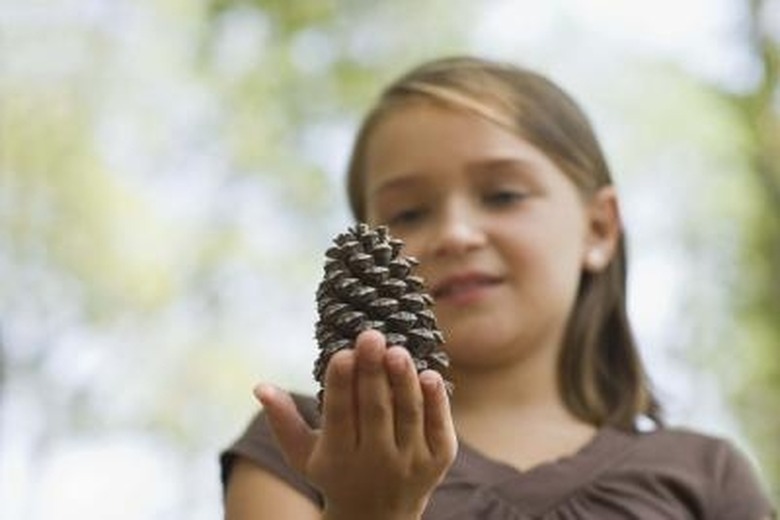How To Identify A Pine Cone
You might pick up a suspected pine cone in a forest, public park or in your garden. But, you could have confused it with a spruce or fir cone because they are similar in appearance. However, once you know what characteristics to look for, pine cones are easily identified from other types of cones you might find. To identify the pine cone, take it home and look at it closely.
Step 1
Rinse the pine cone underneath a tap to remove any mud or debris that is attached to it. This gives you a clearer view of the cone, and enables you to identify it more easily.
Step 2
Hold the cone in the palm of your hand. Pine cones are rounded at the base but sit upright when they are balanced. The cones vary in size from two inches in length to four inches or greater, if it is a particularly large cone.
- You might pick up a suspected pine cone in a forest, public park or in your garden.
- However, once you know what characteristics to look for, pine cones are easily identified from other types of cones you might find.
Step 3
Check that the object has scales. The cone shape contains many layers of small, protruding disks which are like scales. The layers flare slightly, leaving a small gap between each level. If you can identify these, then you are one step closer to confirming the cone as pine.
Step 4
Touch the scales of the pine cone. Some species of pine cone have spikes on the scales, and this characteristic can be used to identify the object. If it is does not, then continue to make further checks.
- Check that the object has scales.
- Some species of pine cone have spikes on the scales, and this characteristic can be used to identify the object.
Step 5
Look at the texture and color of the scales. Pine cones have woody, brown scales and are quite sturdy. Bending or flexing the scales is not possible because they are rigid. However, spruce cones have narrow scales which can be flexed.
Step 6
Compare an image of the object with a picture of a pine cone using a tree guide. Identify similar characteristics, such as the rounded shape and layered scales. This will help confirm the object's identity.
- Look at the texture and color of the scales.
- However, spruce cones have narrow scales which can be flexed.
